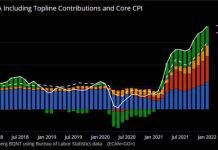What Is The Principle of Market Neutrality?
Market Neutrality is another Hedge Fund Strategy that has been developed with one goal in mind, i.e. to limit the losses faced by institutional investments as a result of market exposure. Market Neutrality is quite simple to understand because it requires an investor to hold securities that eventually make his portfolio completely balanced.
To become Market Neutral, investors take advantage of price increases and decreases at the same time, to achieve an overall beta of zero. This means that an investment is completely market neutral if it has no correlation with any source of risk. So for instance, if a Hedge Fund wants to be Market Neutral, it will take matching long and short positions on various stocks and securities in one or more than one markets by placing bets on the movement of prices. As a result of this position, absolute returns are earned instead of relative ones.
It should be remembered that Market Neutral Strategy makes use of price asymmetry to profit investors. When the price of the securities held is skewed, being long and short at the same time protects against Market Risk, which is unavoidable most of the time.
Market Neutrality is also a basic pillar of the Equity Long-short approach. As discussed previously, having even dollar amounts of both, long and short securities, is what makes the strategy work.
Types of Market Neutral Strategies
Market-neutral strategies seek to generate profits by exploiting price and market inefficiencies. There are two main types of Market Neutral Strategies. These are:
- Fundamental Market Neutral Strategy
- Statistical Market Neutral Strategy
Fundamental MN strategy is a careful analysis of the stocks of a company by a Fundamental Manager. Usually, what the manager says about the stock after quantitative analysis is widely different from what the market perceives it to be. In this situation, investors take a long position on stocks that are attractive and a short position on those that are unattractive. This careful selection of stock is what drives profits.
Statistical or Quantitative MN strategies are focused towards behavioral finance. Without regard to qualitative analysis, this approach seeks to divide stock on the basis of how well it performs on statistical criteria. According to this approach, a statistical assessment of stocks is better than qualitative assessments because investors often act irrationally.
Some other types of market neutral strategies include:
- Long/Short Equity
- Convertible Securities Arbitrage
- Futures / Index Arbitrage
- Fixed Income, Currency and Options Arbitrage
- Risk Arbitrage.
Is It Easy To Be Market Neutral?
Absolute Market Neutrality is an ideal- a scenario that is hardly possible in practical circumstances. While investors can take countless measures to make sure their portfolios are exposed to no risk, the changes in market conditions are very sudden and almost always have a correlation with the investments made in the portfolio.
Therefore, while Hedge Funds have a plethora of complicated instruments to predict market conditions and the movements in the price of securities, there are many segments of the market that can never be speculated with absolute certainty. Moreover, in turbulent economic times, correlations between various market influences can change without giving the investor time to react or adjust the portfolios.
Consequently, achieving market neutrality is not as simple or easy as an onlooker might think. Considerable effort, time and resources are needed to match long and short positions and making a portfolio neutral.
Another concern expressed by observers is that while Market Neutral Portfolios are a buffer against downturns and losses, in a bull market- when there are many opportunities to make a profit- such portfolios have a limited scope. This means that if a neutral portfolio doesnt result in loss, it also does not result in a lot of profit either. For Hedge funds that are geared towards making profit in bulk, the Market Neutral Strategy poses a big disadvantage because it leads to under-performance of a very balanced and risk-free portfolio.
Nonetheless, in the face of the major economic crisis that was witnessed a few years ago, market neutral strategies have made it to the forefront because they offer protection from considerable losses to an extent that investors feel safe. In other words, this strategy lets Hedge Funds actually hedge against market volatility.
Another clear advantage of market neutral funds is that they are more resilient compared to other securities in terms of liquidity. Hence, liquidity risk is another downside that can be avoided with Market Neutrality.
How a Market-neutral Strategy Limits Risk and Preserves Returns?
A market-neutral strategy is a great tool to reduce an investments overall risk while saving return potential. A market-neutral strategy can be seen as a form of hedging strategy that generates profits regardless of the market swings. With a market-neutral strategy, investors can enjoy a return that is determined by the skill level of the investors rather than the markets.
HedgeThink.com is the fund industry’s leading news, research and analysis source for individual and institutional accredited investors and professionals






































